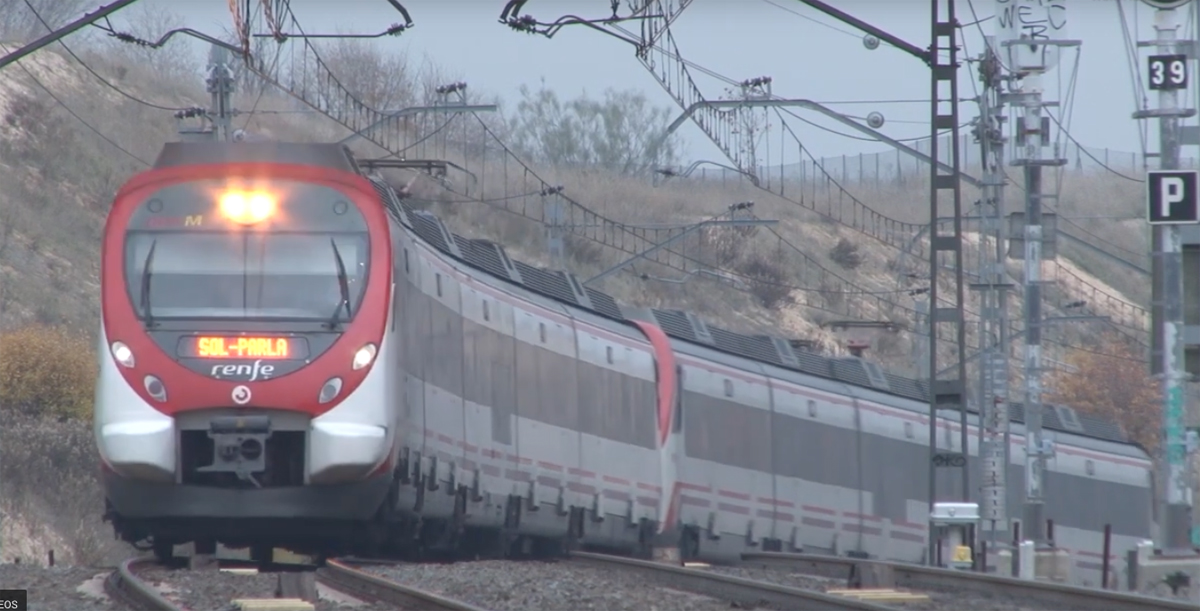“We’re done with the trying. We’re now deploying,” CEO J.J. Ruest told shareholders and analysts at the railroad’s investor day on Tuesday.
Ruest, who says he has a “bias for action,” has made rapid adoption of technology a priority since becoming chief executive in July 2018.
CN is working on a half-dozen technology projects, including automated track and train inspection, handheld devices for mechanics and train crews, process automation, and network planning.
The programs share a goal of making the railroad able to predict and prevent issues that can lead to service and safety problems.
By the end of the year, CN’s autonomous track inspection program will have eight sensor-laden boxcars in service, with 16 more scheduled to join the fleet by the end of 2021.
The cars use an array of sensor technology, including lasers and LIDAR, to inspect track while operating within regular revenue trains moving at authorized track speed. Sensor data is analyzed with artificial intelligence, allowing CN to automatically identify defects and schedule repairs.
Compared with traditional hi-rail track inspections, the boxcar program increases inspection frequency and provides better data while improving service reliability by reducing track disruptions, CN says.
CN is building automated inspection portals that tie high-resolution cameras to software that uses machine learning to identify defects as trains roll by at track speed.
Five portals, using 17 algorithms to flag defects, are currently in service in Canada. Two are scheduled to enter service in the U.S. this year, and CN anticipates adding eight to 10 more portals in 2020 to fully build out the system. By then, the portals will use 80 algorithms to identify defects.
CN says it will see immediate benefits from the system, including reduced roll-by inspections as trains depart yards, which will help reduce train delays and improve yard capacity. The technology promises to improve the frequency and quality of inspections, and also can improve border fluidity for intermodal trains by ensuring manifest accuracy for customs inspections.
In 2021, CN hopes to gain regulatory approval for elimination of time-consuming manual certified car inspections.
With more inspections done by automated technology, current CN track and car inspectors will spend more time making repairs, the railway says.
CN is putting data in the hands of its mechanical forces and train crews through increased use of mobile devices.
A car repair billing system enables real-time reporting of car repairs and provides more accurate records. Train crews use handheld devices to receive real-time work plans and instructions. The devices also contain operating rules, timetables, and other documentation crews need.
CN aims to automate back-office tasks that currently are time-consuming, manual processes, allowing employees to focus on more important work.
CN’s Smart Network scenario planner is a “digital twin” of its rail network that can simulate train movements and allow the railroad to gain better insights on capacity and operations.
CN says the tool will enable planners to better prepare for projected volume growth and help identify capacity pinch points that need to be addressed. The system will be able to run scenarios for main corridors by the end of this year. Next year, it will incorporate a locomotive and crew planning model and by 2021 will become a full network simulator.
CN also is using predictive analytics to improve the reliability of its locomotive fleet.
Altogether, the technology programs will generate productivity gains and cost savings totaling $200 million to $400 million from 2020 to 2022, CN says.














Dennis, CN did not mention it but another railroad says that they expect their similar systems to flag significantly more track and train defects, which means more work, not less, for maintenance forces.
With a full network sim able to make what are essentially administrative decisions, will the CN really need J.J.?
CSX has had ‘track measuring’ locomotives operating for at least the last 5 years. Sending reports to local track personnel through automatic means and also notifying HQ at the same time. All carriers are heavily involved in automated technologies for all forms of inspections and maintaining records of those inspections and using algorithms to mine and combine the data collected to generate insight into what is happening on the railroad.
Incremental advances as described in the article need to be widely deseminated as they become proven. Since locomotives are generally the heaviest units in a train, I don’t see why clamp-on devices can’t be applied to the leading and trailing pilots of the first locomotive and the trailing pilot of the last head-end locomotive plus the last car of a train to detect guage anomalies and vertical discrepancies. A gross or accumulating discrepancy could alert the crew to take appropriate action. A subsiding soft spot or a widening guage could be identified before causing a derailment.
comparison of immediate results with a stored profile could identify developing anomalies. I would think creating such a device would be economically doable and operationally feasible.
What has not been said is that when track and car inspectors move to other work, the lowest seniority people will lose their jobs.